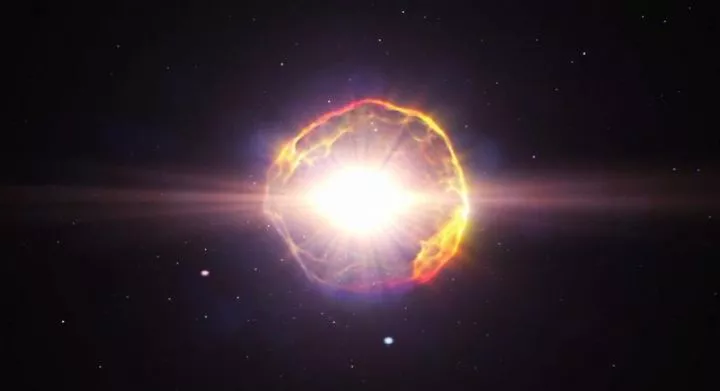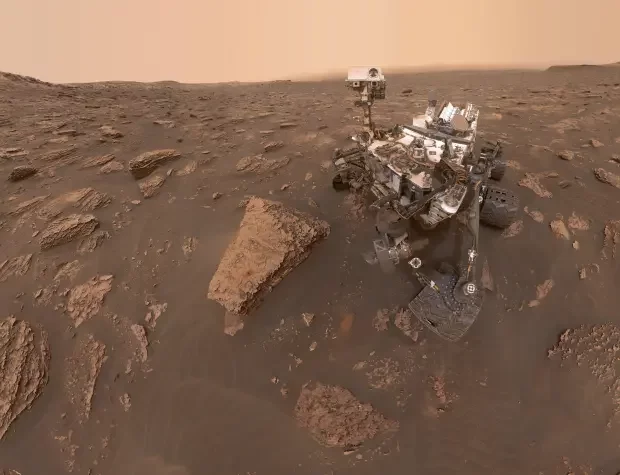
You might get the chance to see a rare cosmic event in just a few weeks.
Astronomers anticipate that a nearby exploding star could appear in the night skies across the Northern Hemisphere.
But you might miss it unless you know where to look.
The star is part of an eruptive two-star system called T Coronae Borealis, located 3,000 light years away.
Every 80 years or so, one of the stars emits a powerful cosmic burst of energy called a nova. One expert told The New York Times these novae are "basically hydrogen bombs."
No need to worry - T Coronae Borealis is much too far for that energy to harm us on Earth. But it will appear as a new star in our night sky for a few days.
Don't expect some blindingly brilliant display, though. If it appears, this new celestial eye candy will be more understated.
"It's going to be one of the top 50 brightest stars in the sky," astrophotographer Dan Bartlett, who has been checking the skies each night since June, told Business Insider.
"It's going to be as bright as the stars in the Big Dipper," Bartlett added.
So, if you know where in the sky to look, it should be relatively easy to pinpoint. If you don't know where to look, it will blend in with the rest of the stars, and you'll probably miss this "once-in-a-lifetime event," as NASA describes it.
How to see a rare nova in the sky
The T Coronae Borealis is located in the constellation Corona Borealis. "It's a cute little constellation that looks like a crown," Bartlett said.
You don't have to go out every night and check for it, like Bartlett, though. To ensure you don't miss the nova, simply keep an eye out for updates from NASA. A surefire way to do this is to follow the NASAUniverse account on X.
In the meantime, it's a good idea to familiarize yourself with how to find the Corona Borealis constellation and know where exactly the nova will appear within that patch of sky.
First, look for the shining stars Vega and Acturus to locate the Hercules constellation. Nearby is an arc of four visible stars that make up Corona Borealis:
The brightest star in Corona Borealis is called Alpha Coronae Borealis, which forms the peak of the upside-down crown in the image below.
Then, look slightly down and to the left of Alpha Coronae Borealis: that's where the T Coronae Borealis star system lives and where the nova should appear:
When you get the alert from NASA, check out the weather and moon forecast. A cloudless, moonless night will offer the best viewing conditions.
"The best time to look by eye will be about one day into the eruption. But the nova will be visible by eye for a few days," Elizabeth Hayes, project scientist for the Fermi Gamma-ray Space Telescope at NASA's Goddard Space Flight Center, told CNET.
As with any stargazing opportunity, it's best to head away from city lights and find a quiet field in the countryside where you can lay back and look straight up to the sky.
You can use a star map app on your phone to find the constellation. Looking at your phone will mean you will need to give your eyes about 30 minutes to fully adjust to the darkness and let the stars shine through.
A cosmic eruption in the night sky
The last time humans saw the T CrB nova was in 1946. And, over the last decade, the star system has been behaving a lot like it did leading up to the '46 event, which led NASA to predict that the nova could reappear in our night skies by September.
Not to be confused with a supernova, which is when a star completely explodes, a nova is when a star erupts an enormous amount of energy and then returns to its natural state.
That's what's happening to one of the stars in the T Coronae Borealis star system. The two-star system consists of a tiny white dwarf - the core of a dead star - which is locked in the orbit of a giant red star.
As the red giant tears apart nearby stars, the dense white giant absorbs the shrapnel, a mixture of hydrogen-rich materials that come its way.
The tiny dead star then gradually becomes hotter until it reaches a breaking point when all that energy is released in a huge cosmic explosion called a nova.
Humans have seen this nova many times before. It was first identified by astronomers in the late 1800s, and it bursts about every 80 years.
Indeed, the explosion heading our way would have taken place thousands of years ago, but requires all that time for the light to reach us.
It's hard to know if the eruption took place until we can see it. But for Gianluca Masi, an astrophysicist and the scientific director of the Virtual Telescope Project, that's what makes it fun.
"This kind of uncertainty, to me, makes things even more fascinating, as we need to look every clear night up there and at some point, with our joy and surprise, we will find T CrB shining up there!" Masi told BI in an email.
If, or when, the nova rears its head, it'll be worth checking out - this will probably be the last viewing opportunity before the early 2100s.
"We don't often see a repeated outburst in a human lifetime, and rarely one so relatively close to our own system. It's incredibly exciting to have this front-row seat," Rebekah Hounsell, a nova expert at NASA's Goddard Space Flight Center, said in a press release.
















Comments